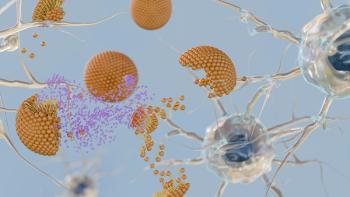
Congress Approves Down Payment on Health Reform
In addition to providing tax breaks and investing billions to jump start the economy, last month?s economic stimulus package supports healthcare for the unemployed and takes steps to modernize the nation?s troubled healthcare system.
In addition to providing tax breaks and investing billions to jump start the economy, last month’s economic stimulus package supports healthcare for the unemployed and takes steps to modernize the nation’s troubled healthcare system. When coupled with the just-reauthorized Children’s Health Insurance Program (CHIP), the new policies take important steps towards expanding health care coverage and setting the stage for future healthcare reform.
Key health-related provisions in the legislation include:
- $87 billion in additional funding for Medicaid.
- $25 billion to help laid-off workers pay health insurance premiums under the COBRA program.
- $19 billion to establish interoperable health information technology and provide incentives for doctors and hospitals to use electronic medical records.
- $10 billion to fund research supported by the National Institutes of Health (NIH) research for cancer, Alzheimer’s disease, heart conditions, and stem cell research, and to improve NIH facilities.
- $2 billion to expand and modernize community health centers.
- $1.1 billion to fund research on the relative effectiveness of healthcare services and treatments by the Department of Health and Human Services (HHS), including the NIH and the Agency for Healthcare Research and Quality (AHRQ).
- $1 billion for prevention and wellness programs to support vaccination and fight disease.
Supporting the safety net
Most of the money in the bill devoted to healthcare aims to expand coverage for the uninsured. The added funds will bolster state Medicaid programs, support hospitals that provide emergency care, continue Medicaid for low-income workers shifting from welfare to work, and help newly unemployed workers retain previous group health insurance. The final compromise, though, drops an earlier proposal to expand Medicaid substantially to cover more higher-income individuals who lose their jobs. Instead, the legislators agreed to increase federal payments to Medicaid programs and let the states determine how to provide needed coverage.
The package also bolsters Medicare by blocking proposed reductions in reimbursement to teaching hospitals and hospice providers. And there’s an adjustment in payments to nursing homes.
System improvements
Although comparative effectiveness (CE) research and health IT are not likely to create many new jobs or expand the healthcare safety net, their potential for reducing healthcare costs justified a place in the economic stimulus package.
Yet, these relatively low-cost initiatives generated considerable controversy. There is broad support for doing more research on which treatments and medical procedures are most effective in patient care. The expectation is that unbiased expert evidence will prompt doctors to prescribe appropriate treatments and will reduce spending on ineffective procedures and products in the process.
The fear of pharmaceutical and medical device companies, though, is that the program will be used to blast high-tech, high-cost products. Initial language accompanying the House bill stoked these worries by promising payoffs from CE analysis showing what’s most effective and should be used, and that less effective and more expensive products “will no longer be prescribed.” That phrase set off an eruption of dire warnings about treatment denials and government rationing. Pharma lobbied to describe the program as “clinical effectiveness” research and to kill any hints of treatment mandates or cost consideration.
In the end, the CE research provision stayed in the bill without the term “clinical,” but also without any mention of cost. The language specifies that there is no intent to use CE data to mandate coverage, reimbursement, or other payer policies. The measure also addresses fears of Pharma and patient advocates that the new program will assess what treatment works best for the average patient and ignore the need for individualized therapy; the conference report notes that the program should consider patient subpopulations and should not lead to one-size-fits-all treatment.
Industry also objected to focusing the CE research agenda on drugs, instead of much trickier comparisons of medical procedures. And the composition and functions of the new Federal Coordinating Council for CE Research makes manufacturers nervous. The final legislation, though, specifies that the Council won’t mandate coverage or reimbursement or issue clinical guidelines. But it’s generally understood that CE assessment funded by AHRQ or NIH will carry considerable weight and support coverage and reimbursement decisions by Medicare and insurers. Payers want CE research to consider costs, and that’s not prohibited in the bill.
Wired nation
The stimulus package also devotes a more lengthy section to promoting health IT adoption. Considered critical for modernizing healthcare delivery and reducing costs, the bill provides $19 billion to bolster IT operations and prompts physicians and hospitals to install and use electronic health record systems. The legislation officially establishes a national health IT coordinator in HHS to head up these efforts, sets deadlines for establishing interoperability standards, and provides a format for doling out subsidies to IT adopters.
The main source of controversy is the push to strengthen privacy protections for individual health records. Insurers, payers, providers, and pharmacists objected that added curbs on disseminating information will stymie efficient and effective care. They fear that new requirements for allowing patients to review personal records will be cumbersome and costly and are looking to HHS to develop workable regulations for an interoperable health IT system to materialize.
Newsletter
Stay at the forefront of biopharmaceutical innovation—subscribe to BioPharm International for expert insights on drug development, manufacturing, compliance, and more.





